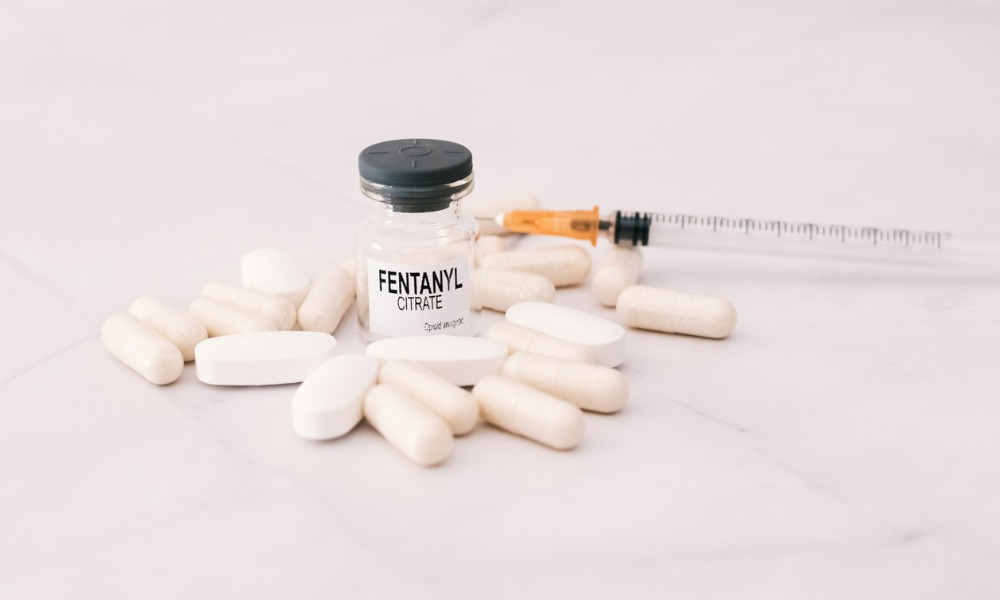
Health issues didn't outweigh public interest, enforceability for trafficking dangerous drug

A man seeking bail during his sentence for fentanyl trafficking failed to show that his appeal was not frivolous and his detention was not necessary in the public interest, the Ontario Court of Appeal has ruled.
The applicant in R. v. Shaheen, 2022 ONCA 773, was a pharmacist convicted of trafficking over 5,000 fentanyl patches by using fraudulent prescriptions. He staged a fake robbery to cover the discrepancy in the pharmacy’s inventory and claimed insurance for the value of the allegedly stolen drugs. He received a 14-year imprisonment sentence.
The applicant suffered from kidney disease, leading to a 2012 kidney transplant, and heart problems, for which he had an angioplasty. In 2022, he caught COVID-19 and was hospitalized.
The appellate court unanimously dismissed the applicant’s conviction appeal. It denied his claim that the trial judge erroneously rejected his pretrial and midtrial applications under s. 11(b) of the Canadian Charter of Rights and Freedoms. It found that the judge properly categorized the periods of delay, considered the case’s complexity, and applied the transitional exception in R. v. Jordan, 2016 SCC 27 and in R. v. Cody, 2017 SCC 31.
The appellate court also rejected the applicant’s grounds of appeal under ss. 7 and 8 of the charter. It decided that the Ontario College of Pharmacists’ sharing of the results of its investigation with police did not amount to a charter breach. The trial judge made no errors in determining that there was no infringement of the applicant’s right against self-incrimination and that the College’s disclosure to police was authorized by s. 36(1)(e) of Ontario’s Regulated Health Professionals Act, 1991 and thus not contrary to s. 8 of the charter, the appellate court added.
The applicant succeeded in appealing his sentence, which was reduced to 12 years. He then applied for bail pending his application for leave to the Supreme Court of Canada, arguing that his kidney disease was an exceptional circumstance favouring his release from custody.
The Court of Appeal dismissed the application. The court noted that there was no issue that the applicant would comply with bail conditions, given that he had done so throughout his many years in the criminal justice system.
However, the appellate court found that the applicant’s chances of success on the application for leave were “low to nil.” The court rejected the applicant’s arguments that the leave application passed the low threshold to be “not frivolous” and that the appellate court had only summarily addressed the trial judge’s findings relating to the charter issues.
The Court of Appeal held that the judge made an extensive ruling and considered each step of the proceedings before deciding that the delay was reasonable. Further, the appellate court’s previous ruling succinctly but thoroughly tackled the issues regarding ss. 7, 8, and 11(b).
The case of R. v. Scott, 2022 ONCA 659, on which the applicant relied, did not support the position of the applicant, who was asking for a second review of a ground of appeal that a panel of the appellate court had previously considered and rejected, the Court of Appeal said.
Third, upon balancing the very high interest in enforceability with the low interest in reviewability, the appellate court found that the applicant failed to show that detention was unnecessary in the public interest.
The Court of Appeal explained why the interest in enforceability was high by saying that fentanyl was dangerous, addictive, and capable of causing extraordinary harm, death, and devastating effects on lives, communities, and families. The applicant, through trafficking a large quantity of fentanyl, endangered the public, the court said.
Lastly, the appellate court determined that the applicant’s health issues did not outweigh the interest in enforceability. The court noted that correctional facilities had a statutory obligation to persons in their care. Though the applicant’s wife provided an affidavit containing information from a medical app that she used for tracking her husband’s test results, the court said that there was no medical evidence deciphering the meaning of these results.